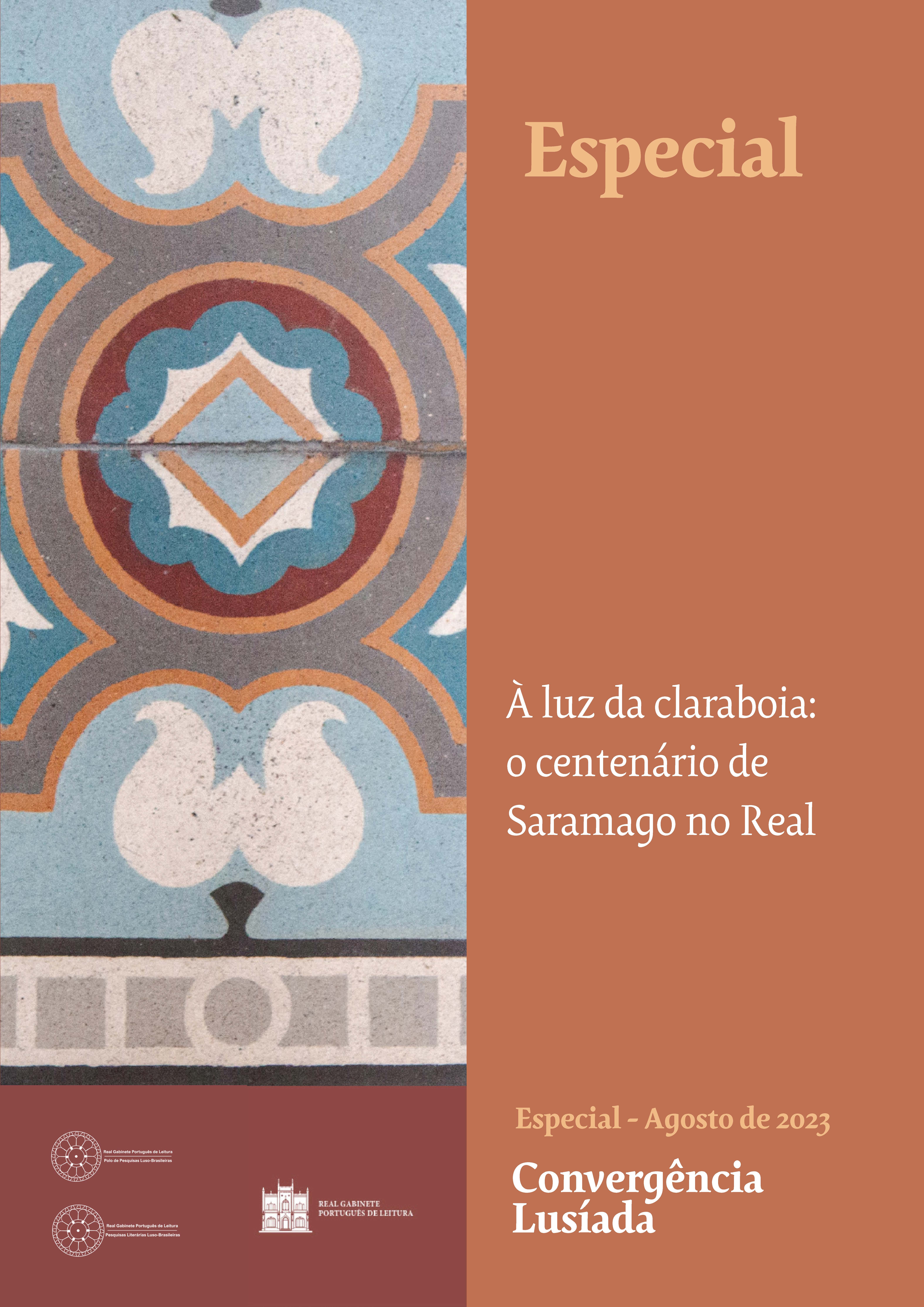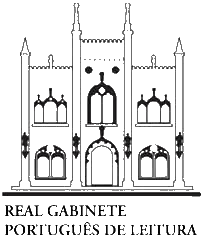The Canon Between Statues and Words: Camões & Company in José Saramago
DOI:
https://doi.org/10.37508/rcl.2023.nEsp.a850Keywords:
Saramago, Camões, canon, intertextuality, intermedialityAbstract
As an inescapable figure of the Portuguese canon, Camões is one of the key authors in José Saramago’s library, and he stands out in the literary landscape of The Year of the Death of Ricardo Reis (1984). Taking into account other studies on the subject, this paper seeks to analyze how this novel addresses both Camões and part of its reception. The main goal is to show that more than one Camões is presented throughout the narrative and that the representation of the canon in Saramago in general passes through the revision of what has already been said and done with it, passes through the reading of other paintings of the same place, inevitably transformed, if not created, by them.
Downloads
References
ANDRADE, Luís Miguel Oliveira; TORGAL, Luís Reis. Feriados em Portugal: tempos de memória e de sociabilidade. 2.ª ed. Coimbra: Imprensa da Universidade de Coimbra, 2012. DOI: https://doi.org/10.14195/978-989-26-0579-1
BOURNEUF, Roland; OUELLET, Réal. L’univers du roman. 2.ª ed. Paris: PUF, 1995.
CAMÕES, Luís de. Os Lusíadas. Org. António José Saraiva. Porto: Figueirinhas, 1982.
CAMÕES, Luís de. Rimas, autos e cartas. Org. Álvaro Júlio da Costa Pimpão. Porto: Civi-lização, 1978.
CERDEIRA, Teresa Cristina. O avesso do bordado: ensaios de literatura. Lisboa: Cami-nho, 2000.
COMPAGNON, Antoine. Le démon de la théorie: littérature et sens commun. Paris: Seuil, 1998.
DEL LUNGO, Andrea. L’incipit romanesque. Paris: Seuil, 2003.
HANSEN-LÖVE, Aage A. Intermedialität und Intertextualität. Probleme der Korrela-tion von Wort- und Bildkunst: Am Beispiel der russischen Moderne. In: SCHMID, Wolf; STEMPEL, Wolf-Dieter (orgs.). Dialog der Texte: Hamburger Kolloquium zur Intertex-tualität. Wien: Gesellschaft zur Förderung slawistischer Studien, p. 291-360, 1983.
HILTON, John. Adamastor, Gigantomachies, and the Literature of Exile in Camões’ Lusíads, Journal of the Australasian Universities Modern Language Association – AUMLA, n. 112, p. 1-23, 2009. DOI: https://doi.org/10.1179/000127909804775623
MARTINS, José Cândido de Oliveira. Releituras de Camões na escrita de Saramago, Re-vista Colóquio/Letras, n. 210, p. 50-60, maio 2022.
PESSOA, Fernando. Obra poética. Org. Maria Aliete Galhoz. 2.ª ed. Rio de Janeiro: Agui-lar, 1965.
QUEIRÓS, Eça de. O crime do padre Amaro: 2.ª e 3.ª versões. Org. Carlos Reis e Maria do Rosário Cunha. Lisboa: Imprensa Nacional-Casa da Moeda, 2000.
RAJEWSKY, Irina. Intermediality, Intertextuality, and Remediation: A Literary Pers-pective on Intermediality, Intermédialités: Histoire et théorie des arts, des lettres et des techniques, Université de Montréal, n. 6, p. 43- 64, 2005. DOI: https://doi.org/10.7202/1005505ar
REIS, Carlos. Diálogos com José Saramago. Lisboa: Caminho, 1998.
RIBEIRO, Bernardim. Menina e moça ou Saudades. Org. Juan M. Carrasco González. Coimbra: Angelus Novus, 2008.
SARAMAGO, José. As notas de Ricardo Reis, Revista Ler, n. 44, p. 106-115, 1999.
SARAMAGO, José. Cadernos de Lanzarote: diário IV. 2.ª ed. Lisboa: Caminho, 1998.
SARAMAGO, José. O ano da morte de Ricardo Reis: romance [dactiloscrito]. BNP Esp. N45/11, 1983. Disponível em: http://purl.pt/13872. Acesso em: 28 out. 2022.
SARAMAGO, José. O ano da morte de Ricardo Reis. 25.ª ed. Porto: Porto Editora, 2016.
SARAMAGO, José. Viagem a Portugal. 26.ª ed. Porto: Porto Editora, 2016.
SERRÃO, Joel. Cesário Verde: interpretação, poesias dispersas e cartas. 2.ª ed. Lisboa: Delfos, 1961.
VERDE, Cesário. Cânticos do realismo: o livro de Cesário Verde. Org. Helena Carvalhão Buescu. Lisboa: Imprensa Nacional-Casa da Moeda, 2015.
VIRGÍLIO. Eneida, v. I. Trad. João Franco Barreto. Typografia Rollandiana: Lisboa, 1808.
WOLF, Werner. (Inter)mediality and the Study of Literature, CLCWeb: Comparative Literature and Culture, v. 13, n. 3, p. 2-9, 2011. DOI: https://doi.org/10.7771/1481-4374.1789
WOLF, Werner. The Musicalization of Fiction: a Study in the Theory and History of In-termediality. Amsterdã: Rodopi, 1999. DOI: https://doi.org/10.1163/9789004651197
Downloads
Published
How to Cite
Issue
Section
License
Authors who publish in Convergência Lusíada agree with the following terms:
- Authors retain copyright and grant the journal right of first publication with the work simultaneously licensed under a Creative Commons Attribution-NonCommercial 4.0 International License (CC-BY-NC 4.0) that allows others to share the work with an acknowledgment of the work's authorship and initial publication in this journal.
- Authors may enter into separate, additional contractual arrangements for the non-exclusive distribution of the journal’s published version of the work (e.g., post it to an institutional repository or publish it in a book), with an acknowledgment of its initial publication in this journal.
- Authors are permitted and encouraged to post their work online (e.g., in institutional repositories or on their website) prior to and during the submission process, as it can lead to productive exchanges, as well as earlier and greater citation of published work.

Revista Convergência Lusíada is licensed under a Creative Commons - Atribuição-NãoComercial 4.0 Internacional.









